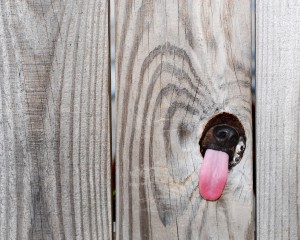Hot-Weather Pet Safety Quiz
 Hot weather dos and don’ts seem obvious where our pets are concerned. Do make sure there’s plenty of drinking water available. Don’t leave pets in the car. However, many of the activities our pets love, and we don’t worry about, especially away from home, can be riskier than you might think, especially in hot weather.
Hot weather dos and don’ts seem obvious where our pets are concerned. Do make sure there’s plenty of drinking water available. Don’t leave pets in the car. However, many of the activities our pets love, and we don’t worry about, especially away from home, can be riskier than you might think, especially in hot weather.
Try this quiz about hot weather pet safety – the answers (near the end) may surprise you!
Which of these situations may be dangerous (or at least very uncomfortable) for your pet?
(Assume drinking water is freely available.)
- Going to a parade or fireworks display in the park
- Playing Frisbee on a warm day
- Taking a brisk run on a cloudy, but hot and humid, day
- Waiting in the car for 20 minutes, in full shade, with the windows rolled partially down
- Sleeping in the backyard without shade
- Strolling through the city on a hot day
Cooling Down When It’s Hot
Dogs tend to lie low during hot weather, snoozing in the shade or in a cool burrow. And when they do get warm, they cool down primarily by panting and sweating from their paws. They may have problems though when temperature and humidity rise, they play too hard, or they find themselves in a hot situation.
Mother Nature did not give dogs efficient cooling systems and some are less efficient than others (dogs with flat faces and short noses, and older or ill dogs). A dog’s normal temperature starts out higher than a human’s (between 100.5° F and 102.5° F) and a dog can’t cool down as efficiently as we can.
Heatstroke is Not Fun in the Sun
When your dog’s temperature is above 103° F, he or she becomes overheated. If his or her temperature reaches 105° F or higher, your dog is at risk of heatstroke. If your pet exhibits symptoms of overheating or heat stroke, help them cool down and get them immediate treatment. With heatstroke, your pet will suffer shock, brain and organ damage, and even death.
You and your pet both love to get outside in the summer and that’s great. Just be aware of what signs to look for and take action if your pet gets overheated. If your pet shows any of the following symptoms take him or her into the shade or air conditioning immediately, and wrap in a wet towel.
Look out for:
- Hyperventilating or excessive panting
- Drooling
- Lack of coordination or staggering
- Lethargy or unconsciousness
- Bright red or blue gums
- Vomiting
- Seizures
You can also put your dog in a cool (not cold) tub of water. Don’t immerse your pet’s head.
Call your vet immediately, and go to an emergency veterinary clinic, even if your dog seems to have revived.
About That Quiz…
- Parades are full of risks. Other people can trip over or step on your pet, while horses and vehicles can run over him or her. Even if all goes well, a parade is just a lot of scary noise and ankles to a dog. And if a parade is no fun, fireworks are pure torture. A dog’s sensitive ears can be damaged by the noise, and the lights are usually terrifying. We don’t recommend taking your dog to fireworks displays.
- Playing Frisbee on the beach exposes your dog to:
- Intense UV rays, both direct and reflected, which increase internal temperature and contribute to sunburn, skin cancer, and cataracts
- High humidity which decreases the effectiveness of panting
- Hot sand, which intensifies overheating and can seriously burn footpads
- In high temperatures and humidity, running anywhere, even on a cloudy day, can cause overheating. Few dogs want to stop playing. Don’t rely on your dog’s “judgment” to know when to quit.
- It is never okay to leave an animal in a parked car. Every year pets cook to death in cars when left for “just for a few minutes.”.
- Never leave your dog outside without plenty of shade (and water of course).
- City sidewalks and pavements trap and reflect heat and are even hotter at your dog’s eye level than at yours. Hot pavement can burn your pet’s feet. If in doubt, test the temperature with your own bare foot!
Be Heat-Smart
- Help prevent your pet from becoming overheated in the first place
- Carry plenty of water for drinking and cooling off
- Stop often for shade breaks
- Exercise earlier or later in the day when it’s cooler
- Avoid hot concrete or asphalt. Not only may it burn your pet’s feet but the heat rising from them can quickly overheat an animal near the ground.
- If temperatures go above 90o F, move your pet inside where it is cooler
- Restrict strenuous exercise for dogs with thick fur or short snouts, old dogs and puppies, pregnant or lactating females, or dogs with medical conditions
- Give dogs with long coats a 1” summer haircut
- If your dog is playing vigorously, turn on the sprinkler so your dog go can cool off or hose him or her down with the hose
- If there just isn’t shade, dampen your pet with water or tie a wet kerchief around his or her neck to increase evaporative cooling
If your pet does become overheated call us immediately. Of course we are always here to answer summer pet-safety questions.


